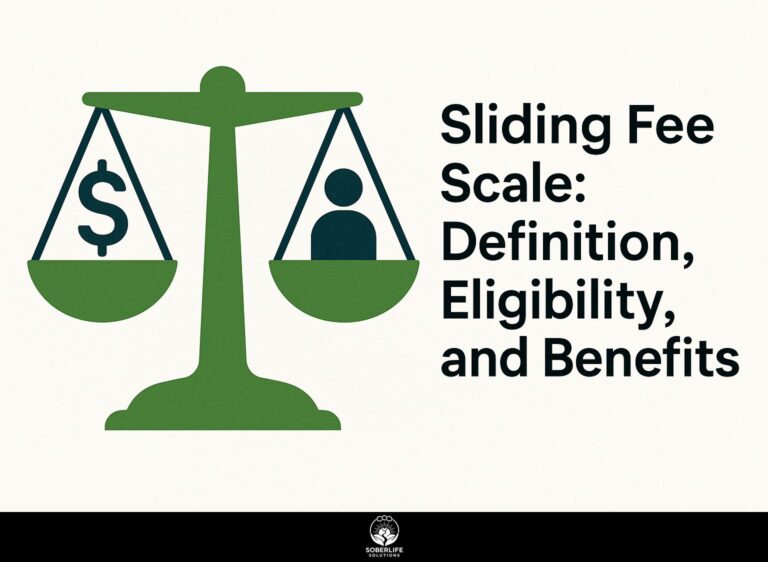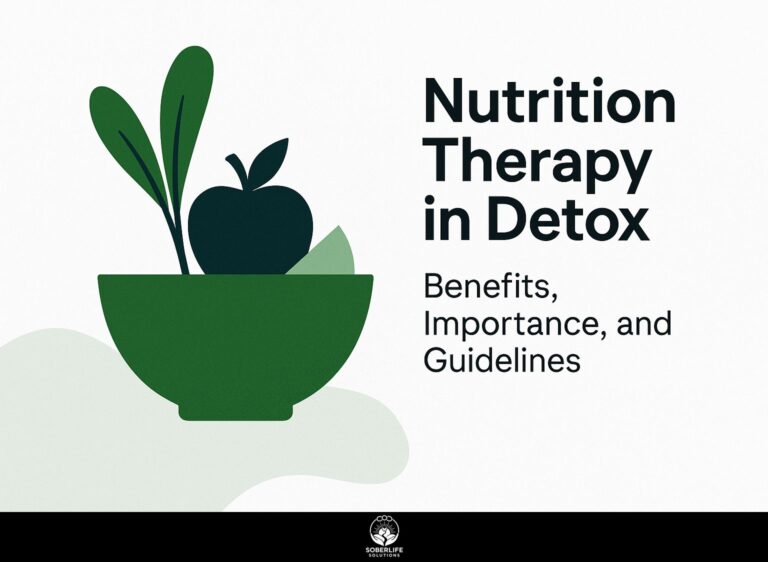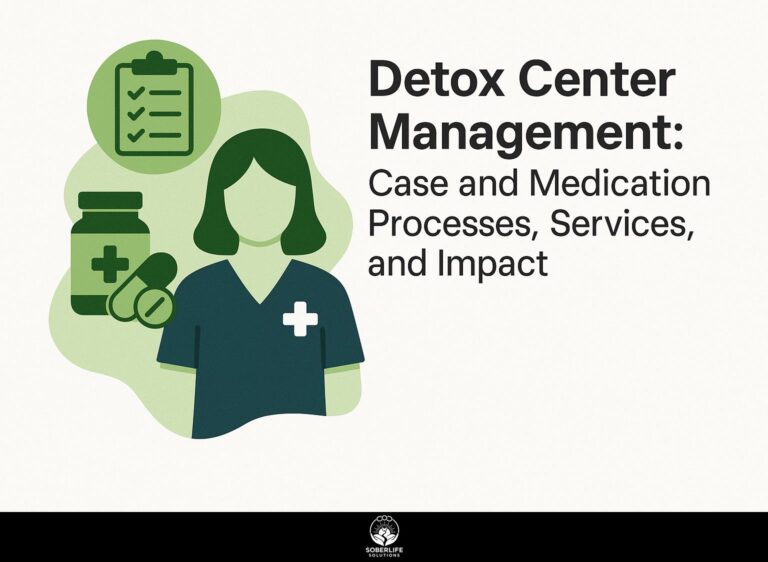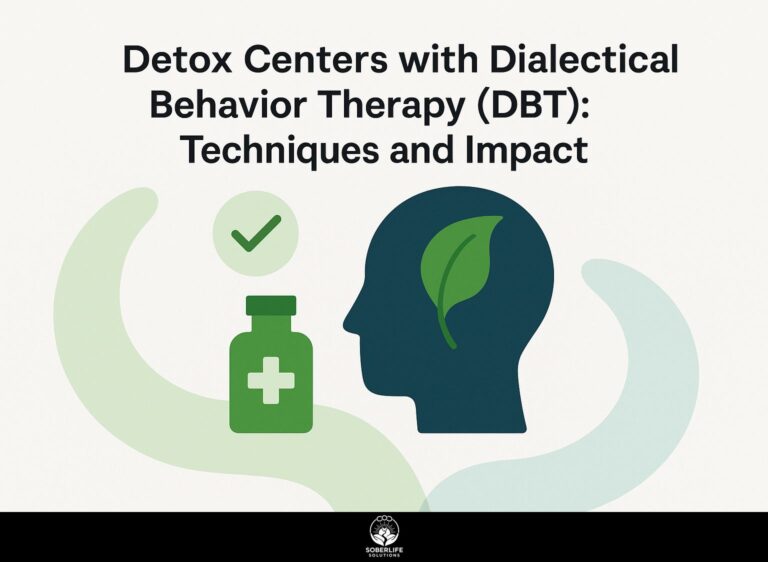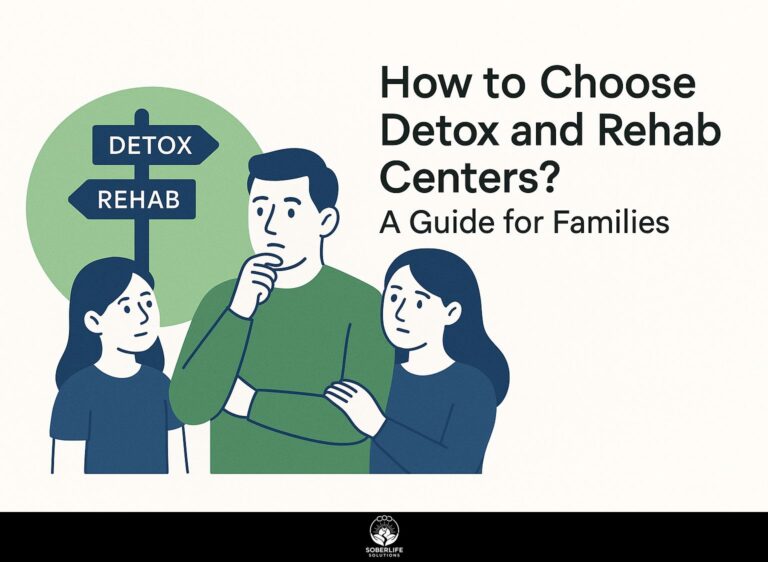Rehab Centers: Services, Benefits, and Importance
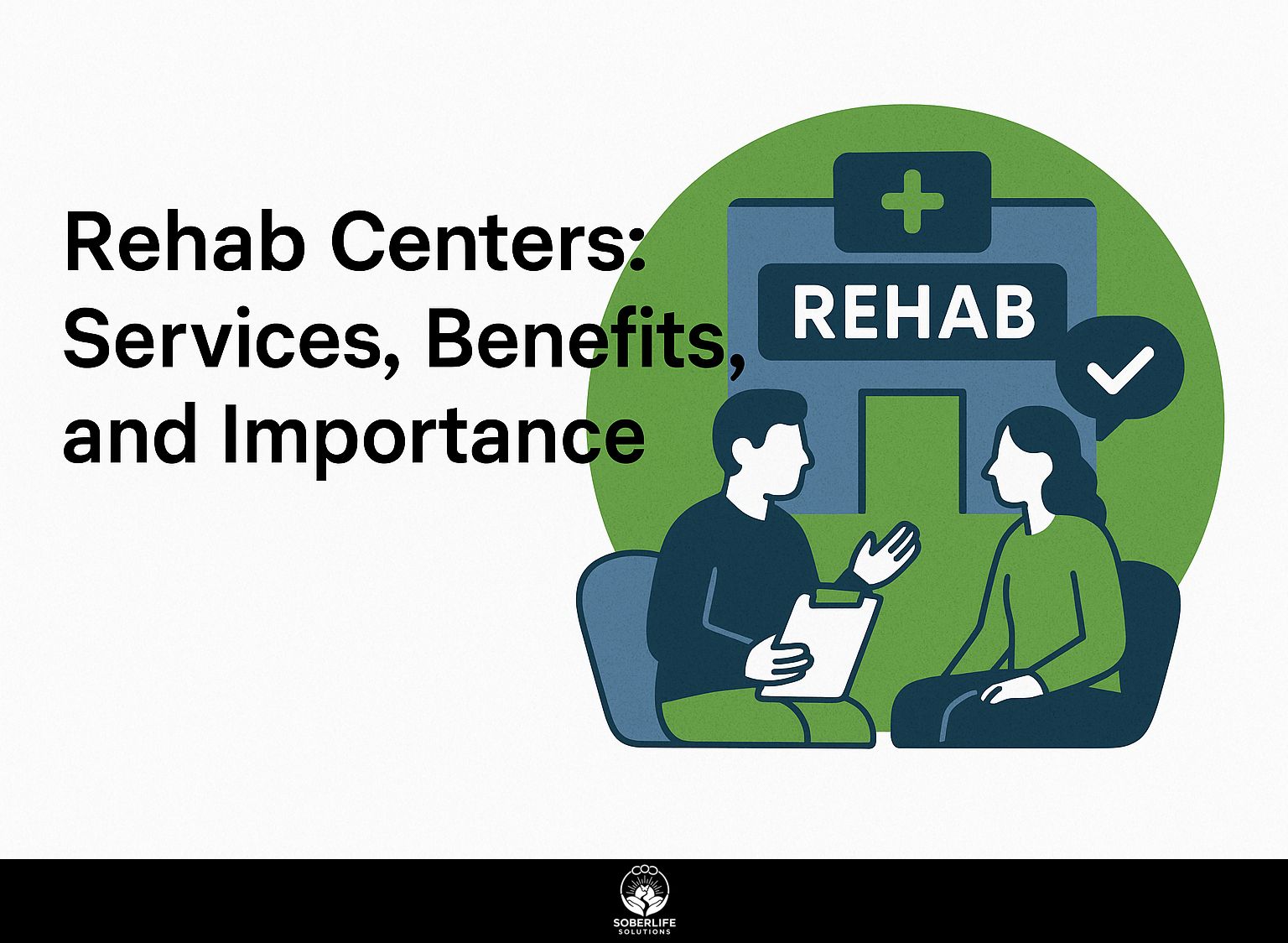
Introduction to Rehab Centers Millions of people have disabilities that affect daily tasks, but rehab provides a way to regain health and self-reliance. The WHO’s Rehabilitation 2030 initiative, endorsed by the World Health Assembly, underscores the need for targeted interventions worldwide. This guide covers the main services at rehab centers, the benefits that have been shown to work, and the key part they play in recovery that changes lives. It gives you facts to make better decisions.
Key Takeaways:
Types of Rehab Centers
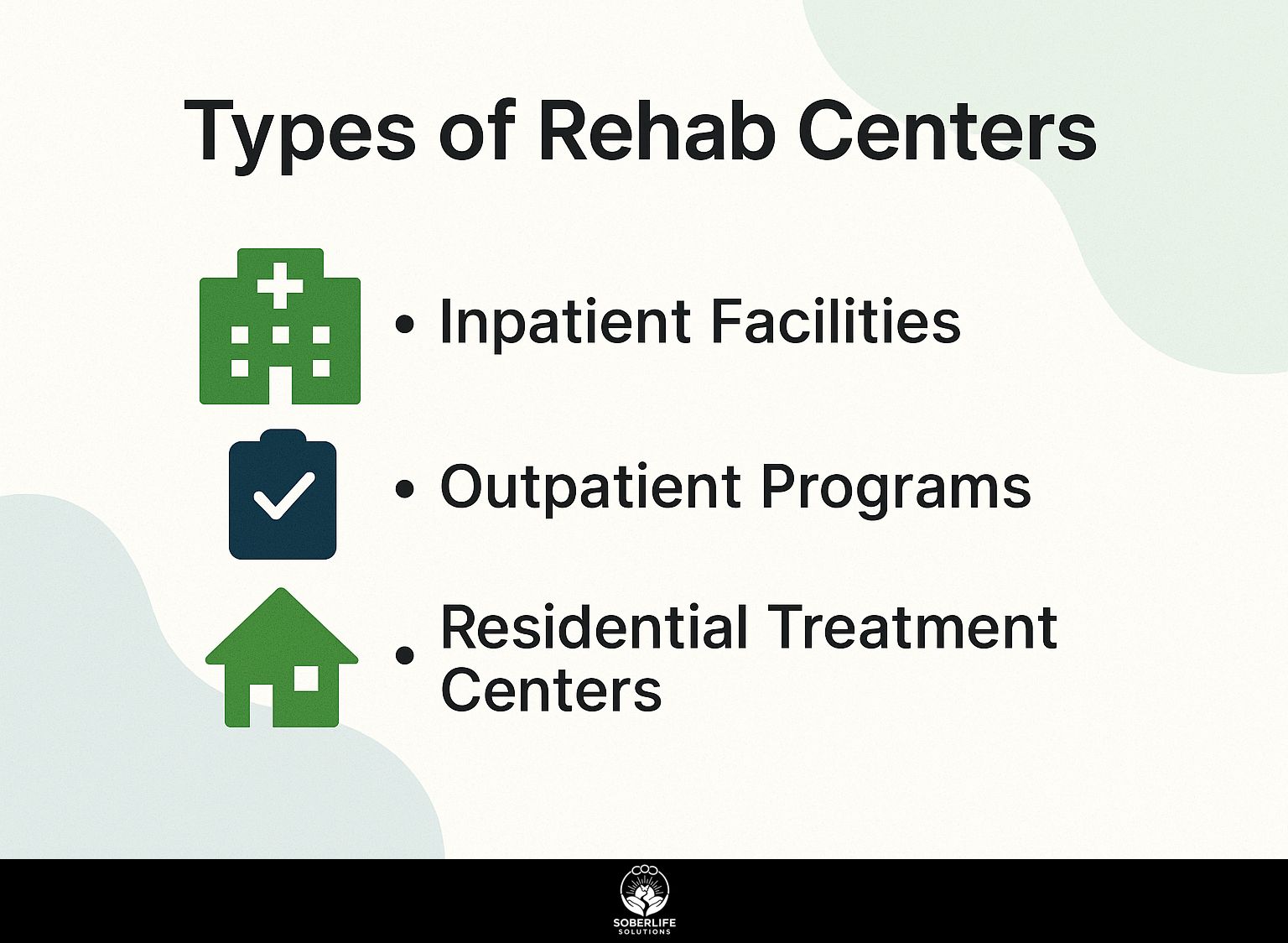
Rehab centers vary by intensity and setting to match needs like stroke recovery or managing Parkinson disease, with facilities like Vanderbilt Rehabilitation Center offering specialized inpatient care for spinal cord injury patients.
Inpatient Facilities
Inpatient facilities provide round-the-clock intensive care for immediate needs, such as recovery after a stroke, where teams from different medical fields that include physical therapists increase muscle strength by 30% in four-week programs, according to the American Journal of Physical Medicine & Rehabilitation. This aligns with findings from ScienceDirect, which explores effective strategies for treatment strength in rehabilitation.
The admission process is organized to achieve the best results.
- Over 1-2 days, do an initial assessment with the WHO’s International Classification of Functioning, Disability and Health (ICF) to check physical, cognitive, and social needs.
- Develop a customized plan, incorporating daily 45-minute physical exercise sessions with Biodex isokinetic systems for targeted muscle rehabilitation.
- Track progress weekly via metrics like the Barthel Index for activities of daily living.
Avoid common mistakes, such as overlooking speech-language therapy in cerebral palsy cases, which can hinder communication recovery. For instance, a Vanderbilt University study highlighted a patient regaining 80% mobility after a 6-week inpatient stay.
Outpatient Programs
Outpatient programs help with continued self-care at home. These programs suit autism and related conditions, where one speech-language session each week raises communication skills by 25%, based on a 2022 Autism Speaks study.
To get started, follow these actionable steps for enrollment and routine integration.
- Begin with eligibility screening via telehealth platforms like BetterHelp, involving a 30-minute call with a certified speech-language pathologist to assess needs.
- Attend weekly online sessions on Zoom that last 45 to 60 minutes. These sessions use hands-on activities, such as PECS, to help develop speaking skills.
- Use home assignments like daily journaling about social interactions with apps like Proloquo2Go to build on progress.
This flexible approach avoids inpatient commitments, aligning with WHO’s Rehabilitation 2030 initiative for scalable outpatient care in resource-limited settings, promoting long-term independence.
Residential Treatment Centers
Residential centers provide individual-focused settings for long-term conditions such as spinal cord injury. They include helpful devices like white canes, which improve walking ability for 70% of residents in six months, according to data from the Spinal Cord Journal.
A usual day starts with morning physical therapy that uses Theraband resistance bands to build strength in certain areas.
This is followed by afternoon occupational therapy sessions, where therapists change home setups with items like grab bars and voice-activated devices.
This structured routine fosters independence and skill-building.
It provides 24-hour medical support and the chance to connect with other people in similar situations.
A study from Brown University Health found that these factors help heart disease patients recover. Being in a group increases success rates by 40 percent.
Cons involve higher costs, often exceeding $10,000 monthly, though insurance may offset for spinal cord injury cases.
Residents often report sustained mobility gains post-discharge.
Core Services Offered
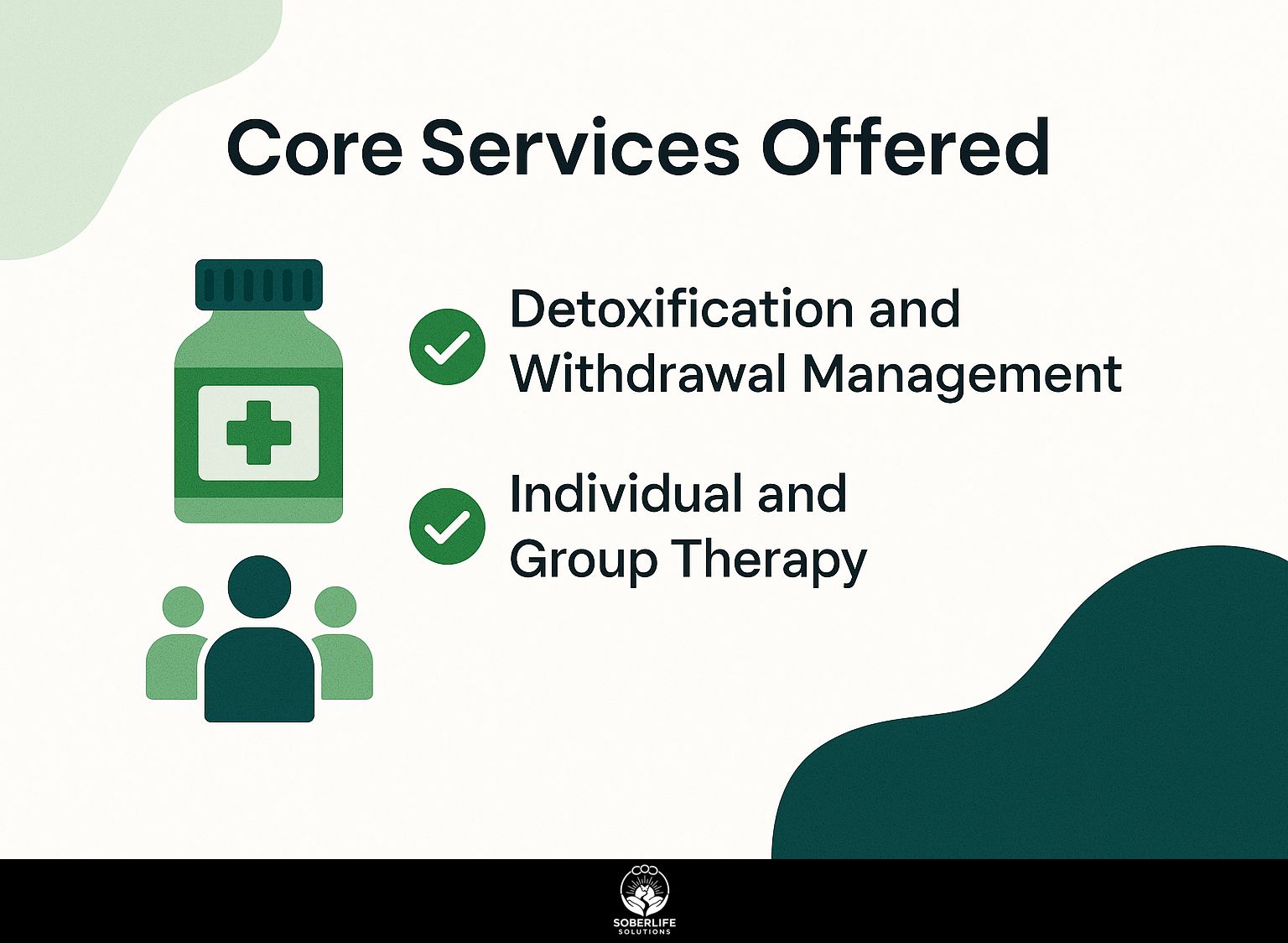
Core services in rehab centers focus on evidence-based interventions led by health workers to tackle addiction treatment, including cognitive-behavioral therapy that reduces relapse by 40% in opioid crisis cases, as seen in Pennsylvania programs.
Detoxification and Withdrawal Management
Detox programs at centers like White Deer Run Treatment Network in Pennsylvania manage opioid crisis withdrawal with medical supervision, using protocols like buprenorphine tapering to minimize symptoms in 5-7 day stays for 85% of patients.
The process follows these key steps:
- Initial medical evaluation (Day 1): Assess vitals and use the CIWA-Ar scale to gauge withdrawal severity, ensuring personalized care.
- Supervised detox (Days 2-5): Administer IV fluids, medications like clonidine for anxiety, and provide 24/7 monitoring to prevent complications.
- Transition to therapy (Days 6-7+): Begin post-detox counseling and link to ongoing rehab.
Overall stays last 3-10 days; avoid rushing without hydration, which risks seizures. CDC research findings, as detailed in their Understanding the Opioid Overdose Epidemic report, show that programs at Pennsylvania facilities like Little Creek reduce hospital readmissions by 50%, improving long-term recovery outcomes.
Individual and Group Therapy
Individual cognitive-behavioral therapy sessions, combined with group 12-Step programs at American Addiction Centers, help schizophrenia patients with addiction build coping skills, achieving 60% sustained recovery rates per NIDA studies.
In individual sessions, patients attend 50-minute weekly CBT using structured worksheets from the Beck Institute, targeting distorted thoughts linked to substance use and psychosis.
Group programs feature 90-minute AA-style meetings twice weekly, emphasizing peer support and step-by-step accountability.
Key implementation benefits include:
- Goal-setting exercises to track sobriety milestones,
- Role-playing scenarios for relapse prevention.
This hybrid approach focuses on psychological resilience, avoiding detox overlaps.
For example, a person in Pennsylvania with schizophrenia and opioid use disorder stayed sober for six months using CBT made for his needs and support in a group, according to a 2022 study in the Journal of Addiction Medicine.
Additional Support Services
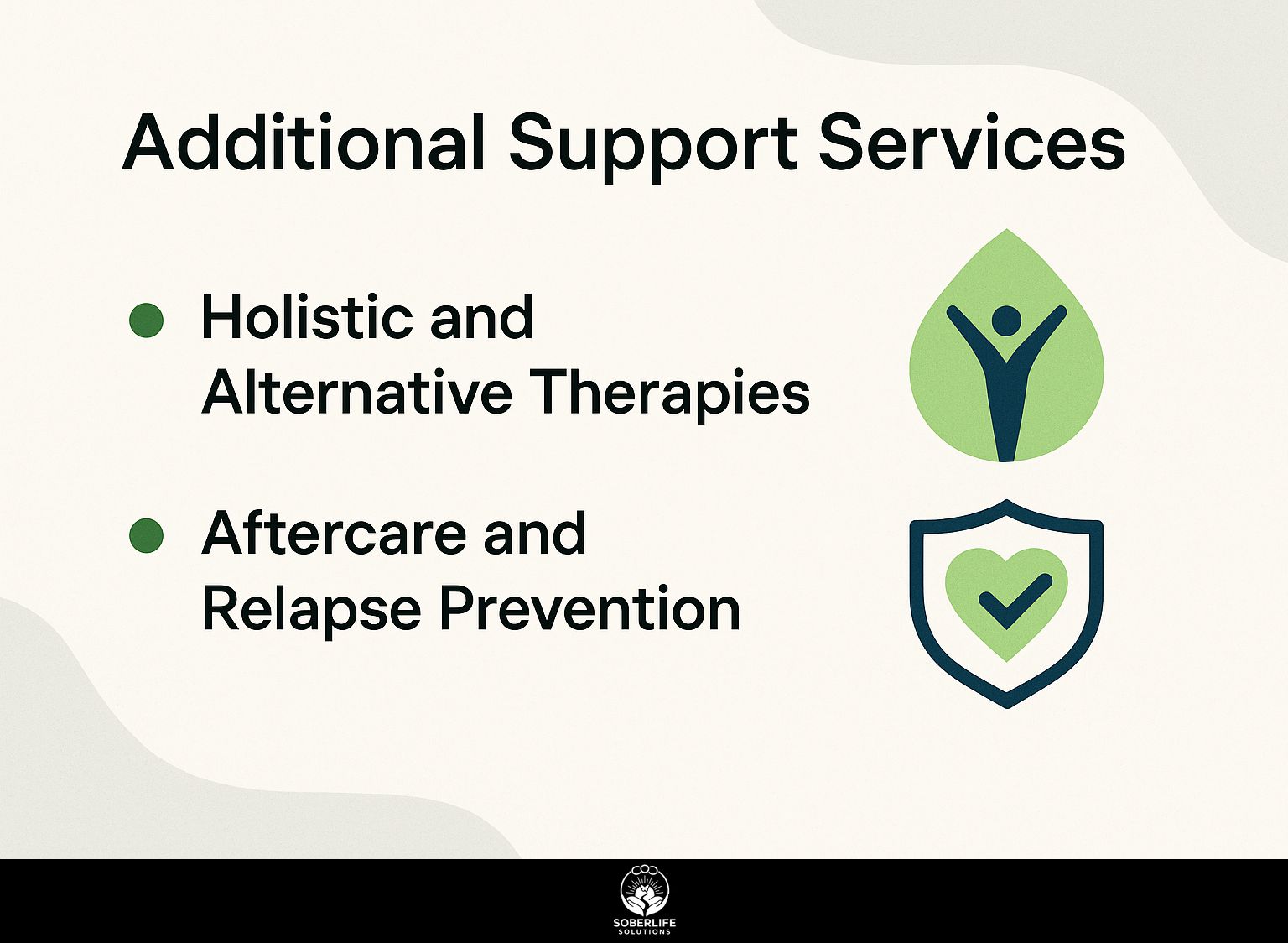
Besides main treatments, services like mind-body therapies at Wellbrook Recovery help people manage themselves better during disease outbreaks. For a deeper exploration of these approaches, our comprehensive guide to holistic therapies in alcoholism recovery outlines key techniques and their benefits. These include physical exercise, which stops relapse in 75% of participants, based on SAMHSA reports.
Holistic and Alternative Therapies
People with long-term health problems build more muscle strength through yoga and acupuncture treatments at Centers of Excellence. The Journal of Alternative and Complementary Medicine published a study finding that heart disease patients had 35% less pain after eight weeks.
To integrate these into your routine, consider these evidence-based practices:
- Yoga: Practice 3x/week for 60 minutes using Gaiam mats, focusing on poses like downward dog for stress relief and flexibility.
- Acupuncture: Attend bi-weekly sessions ($75 each) targeting meridians for pain management.
- Mindfulness meditation: Use Headspace app daily for 10 minutes to reduce anxiety.
- Tai chi: 2x/week, 45 minutes, via free YouTube videos for balance in arthritis.
Best practice: Combine with moderate physical exercise like walking 30 minutes daily. To make healthcare available in low-income countries, the WHO supports universal health coverage with subsidized community yoga programs and telehealth acupuncture consultations for fair access.
Aftercare and Relapse Prevention
Aftercare programs counter misconceptions about recovery by offering 6-12 month self-management plans, addressing global need in low-income countries where relapse rates drop 45% with home environment follow-ups, per World Rehabilitation Alliance data.
Unlike acute therapy focused on immediate detox, these programs emphasize long-term sustainability, as seen in Pennsylvania’s opioid initiatives where structured aftercare boosted recovery rates by 30%, according to the state’s Department of Health. To implement effectively, follow these steps:
- Discharge Planning (Week 1 after treatment): Create a plan to prevent relapse using clear goals, such as attending therapy two times each week to handle specific triggers.
- **Ongoing Check-ins (Monthly):** Use apps like Recovery Record for mood tracking and virtual counseling, achieving 70% retention via telehealth per SAMHSA studies.
- **Community Support:** Join Narcotics Anonymous (NA) meetings or local peer groups for accountability, reducing isolation in low-resource settings.
Key Benefits of Rehab Treatment
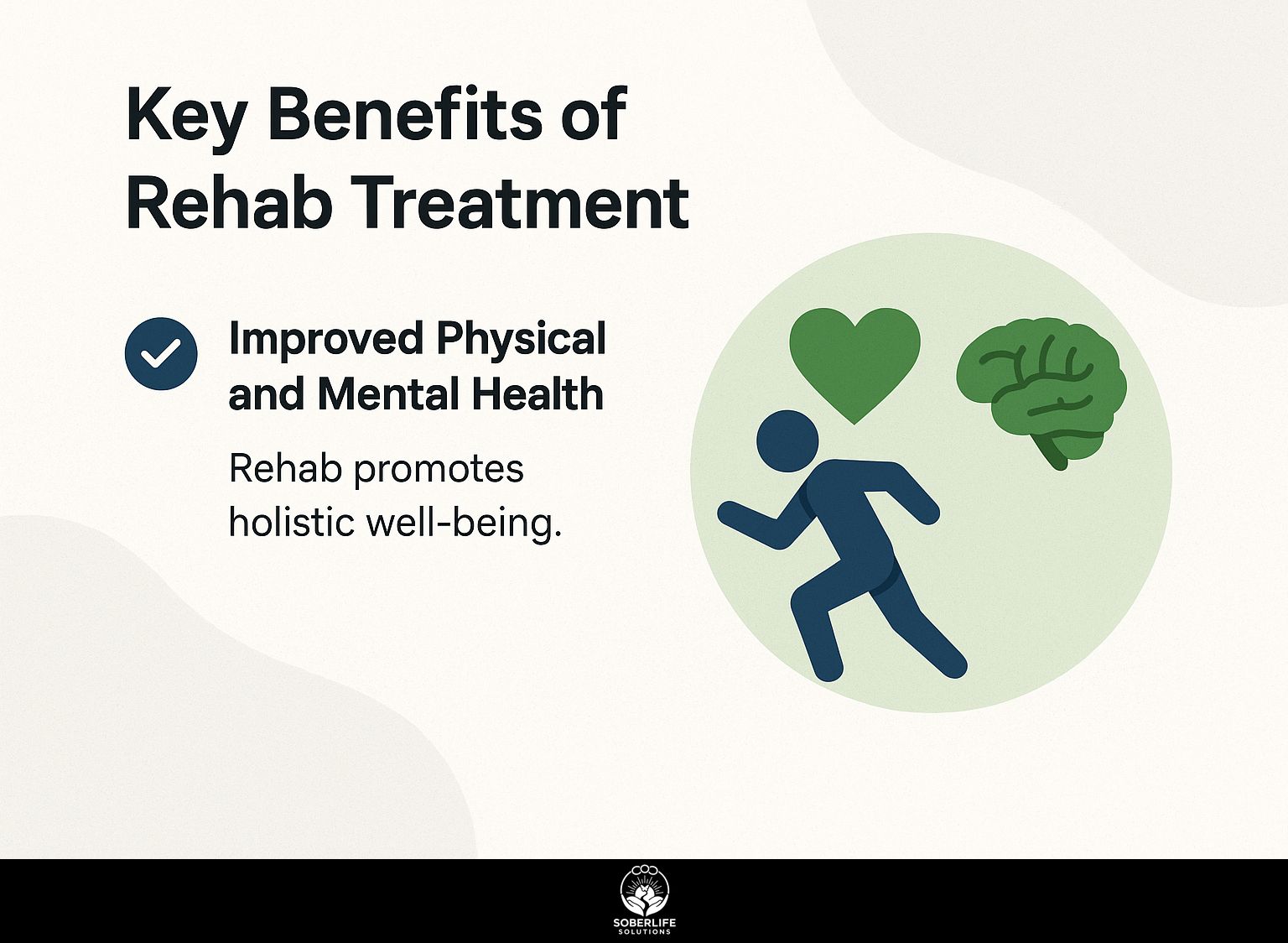
Rehab treatment provides main benefits, such as better ability for people with disabilities. This matches Sustainable Development Goal 3 by improving health systems and cutting disability-adjusted life years by 25%, according to WHO data.
Improved Physical and Mental Health
Rehab boosts physical health through targeted exercise, increasing muscle strength by 50% in Parkinson disease patients, while mental health gains from cognitive-behavioral therapy reduce depression symptoms by 60% post-stroke, according to Neurology journal.
Use gait training tools like LiteGait to achieve these results.
LiteGait improves mobility by 30 percent by replicating normal walking patterns in a harness that supports the body. This fits people with Parkinson’s in 12-week programs.
For mental health, CBT apps such as MoodKit reduce anxiety by 50% through daily mood tracking and cognitive exercises, backed by a 2022 JAMA Psychiatry study.
In a real scenario, a stroke patient completing a 3-month rehab program saved $20,000 in long-term care costs, achieving 2-year health stability via consistent home exercises and app monitoring-calculate your ROI by tracking progress weekly for sustained independence.
The Importance of Rehab Centers
Rehabilitation centers help meet the worldwide need for recovery services. They correct the wrong idea that rehab is only for addiction-such as the various types of addiction treatment-by offering care after natural disasters and disease outbreaks.
The World Health Assembly calls for more funding to reach 50% more people in low-income countries by 2030.
But, achieving this potential runs into major obstacles.
- First, access gaps in remote areas can be addressed through mobile rehab units, as outlined in the Rehabilitation 2030 initiative.
- Second, shortages of funding require pushing for health coverage for everyone to secure lasting financial support.
- Third, stigma persists; counter it with community education campaigns that highlight rehab’s role in disaster recovery.
- Fourth, poor integration into health systems requires training health workers in basic rehab protocols.
The WHO’s 2023 report on rehabilitation in emergencies underscores these needs, showing that integrated services could reach 1 billion people with disabilities annually.
Policymakers must prioritize systemic reforms to embed rehab in national health strategies for equitable, resilient global health.
Frequently Asked Questions
What are rehab centers and why are they important?
Rehab centers are specialized facilities designed to help individuals overcome addiction, mental health issues, or physical rehabilitation needs through structured programs. The importance of rehab centers lies in their ability to provide a safe, supportive environment for recovery, preventing relapse and promoting long-term wellness. Knowing the services, benefits, and value of rehab centers helps people choose effective treatment options.
What services do rehab centers typically offer?
Rehab centers provide detox, one-on-one therapy, group therapy, counseling, medical oversight, and whole-body options such as yoga or art therapy. These services deal with the main causes of addiction or injury. Looking at the services, benefits, and role of rehab centers shows how full treatment brings better results for patients.
What are the key benefits of attending a rehab center?
Going to a rehab center provides help from trained staff, support from others in treatment, ways to learn habits that stop relapse, and better health in general. Patients often experience emotional healing and regained independence. Recognizing the services, benefits, and importance of rehab centers underscores their role in transforming lives through evidence-based interventions.
Why is it important to choose a reputable rehab center?
Choosing a reputable rehab center is important because it ensures quality care, accreditation, and personalized treatment plans that align with individual needs. Poor facilities may lack proper oversight, leading to ineffective recovery. The services, benefits, and importance of rehab centers emphasize the need for licensed programs to maximize success rates and safety.
How do rehab centers support long-term recovery?
Rehab centers support long-term recovery through aftercare programs, alumni networks, ongoing therapy, and family involvement sessions. These elements help maintain sobriety and manage triggers post-treatment. Looking at the services, benefits, and importance of rehab centers shows their key role in supporting long-term changes in behavior and stable lives.
What role do family members play in rehab centers’ programs?
Family members take part in rehab center programs by attending education sessions, family therapy, and support groups. These steps help repair relationships and learn about addiction. This involvement enhances the recovery process. Rehab centers provide services, benefits, and value through this complete method, which builds community connections and cuts down on loneliness for the patient.

